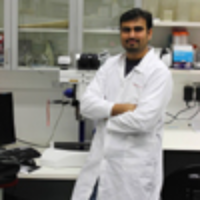Touch DNA Recovery from Non-porous Surfaces
Published on: 1st May, 2025
Touch DNA, the minute quantities of DNA deposited through skin contact, has become a valuable tool in forensic investigations. However, the recovery of touch DNA from non-porous surfaces remains a challenging task, requiring optimized collection and extraction techniques to maximize DNA yield, because non-porous surfaces have smooth, non-absorbing material properties. This review explores various non-porous surfaces such as glass, plastic, and metal, analyzing their impact on DNA recovery efficiency. Different collection methods, including swabbing, tape lifting, scrubbing, and vacuum collection methods, are evaluated to determine their effectiveness in retrieving minute amounts of DNA from these surfaces. Through a comparative analysis of existing studies, this paper identifies which collection methods work best for different non-porous surfaces and why choosing the right technique matters. Factors such as surface type, environmental conditions, and collection technique performed, time duration, and so on can affect DNA recovery, making it crucial to use the most effective approach. This review also emphasizes the need for standardized protocols to ensure consistent and reliable results in forensic investigations. Having clear guidelines can reduce errors, improve DNA analysis, and make touch DNA analysis more reliable in forensic investigations. By focusing on these aspects, this study aims to contribute to the ongoing efforts in refining touch DNA recovery strategies.
Browse by Subjects
Biology Group Journals
Chemistry Group Journals
Clinical Group Journals
- Archives of Food and Nutritional Science
- Annals of Dermatological Research
- International Journal of Clinical Microbiology and Biochemical Technology
- Journal of Advanced Pediatrics and Child Health
- Journal of Pulmonology and Respiratory Research
- Insights in Clinical and Cellular Immunology
- International Journal of Clinical Anesthesia and Research
- Journal of Clinical Intensive Care and Medicine
- Journal of Clinical, Medical and Experimental Images
- Journal of Neuroscience and Neurological Disorders
- Insights in Veterinary Science
- Archives of Asthma, Allergy and Immunology
- Journal of Child, Adult Vaccines and Immunology
- Archives of Cancer Science and Therapy
- Clinical Journal of Nursing Care and Practice
- Annals of Clinical Gastroenterology and Hepatology
- Journal of Hematology and Clinical Research
- Archives of Pathology and Clinical Research
- Annals of Clinical Hypertension
- Journal of Oral Health and Craniofacial Science
- International Journal of Clinical and Experimental Ophthalmology
- Journal of Radiology and Oncology
- Archives of Clinical and Experimental Orthopaedics
- International Journal of Bone Marrow Research
- International Journal of Clinical Virology
- New Insights in Obesity: Genetics and Beyond
- Advanced Treatments in ENT Disorders
- Journal of Clinical Advances in Dentistry
- Insights on the Depression and Anxiety
- Heighpubs Otolaryngology and Rhinology
- Clinical Journal of Obstetrics and Gynecology
- Archives of Surgery and Clinical Research




